Apple HomePod review: fantastic audio, cool looks, Siri is still behind the competition
HomePod is an impressive technical achievement and sounds just incredible, but Siri doesn't quite have Alexa quaking in her boots

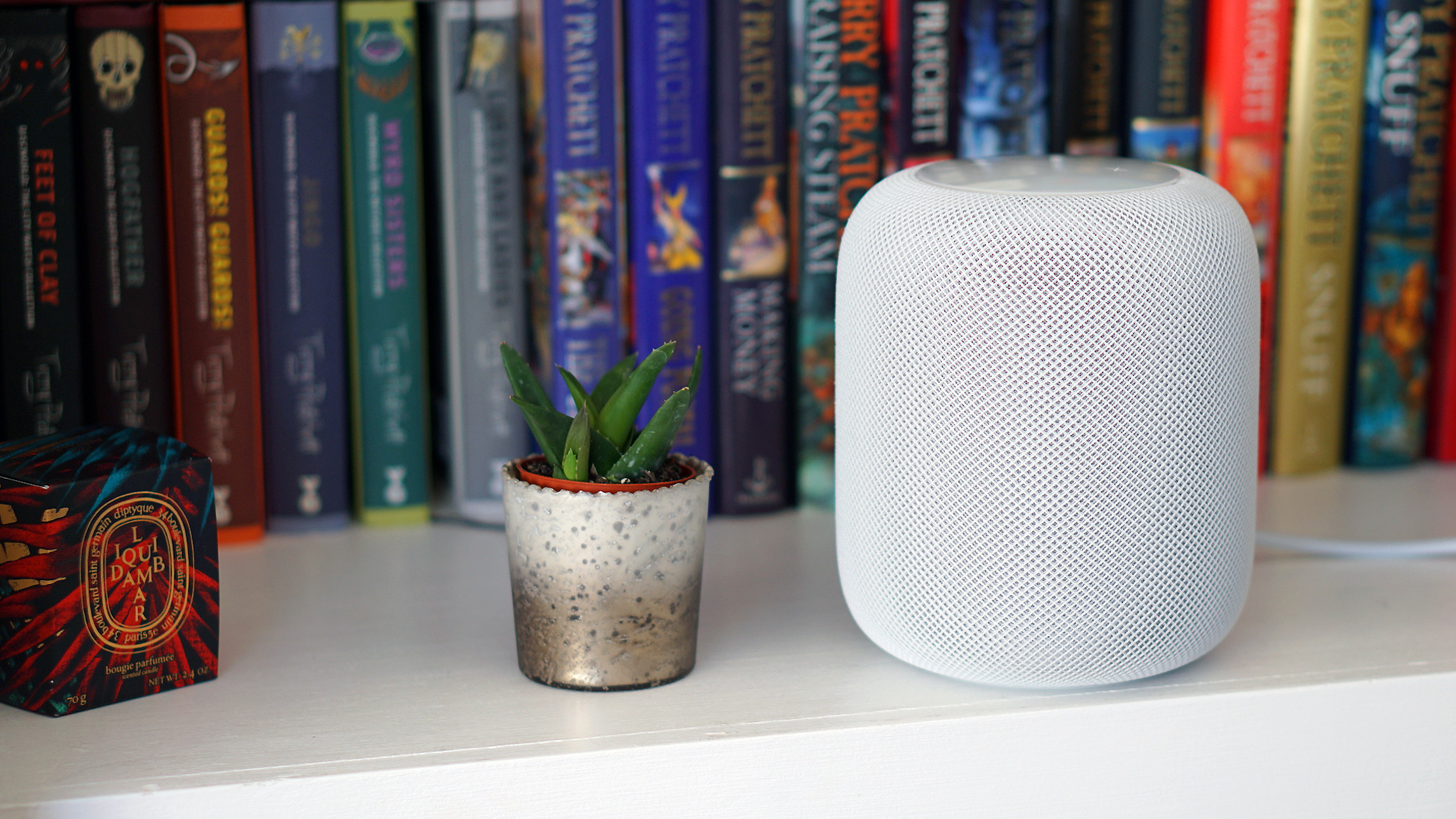
HomePod is the best-sounding smart speaker we've heard so far, and feels worth its serious price tag. But no multi-room at launch and Siri limitations compared to Alexa mean it may be one for committed Apple fans only
-
+
Sounds truly excellent
-
+
Siri commands work well
-
+
Small and smart
-
+
Great multi-room over AirPlay 2
-
-
You need to be deep in the Apple universe
-
-
Siri doesn't match Google Assistant or Alexa for versatility
Why you can trust T3

Let’s start with a simple truth about the HomePod: if you’re aren’t an iOS device owner and user of Apple Music or iTunes Match, it isn’t for you. Unlike the Amazon Echo, Google Home or Sonos One, it’s entirely reliant on you having an Apple device to make it function at all, let alone play music.
But if your household is kitted out with iPhones, and you’re into music (and Apple Music), and in the market for a speaker that sounds fantastic and has a few voice-controlled extras to boot, then it could be that the HomePod extremely is for you.
If the price is too high, don't forget that theres a smaller version of the HomePod available too now – here's our HomePod mini review.
Apple HomePod review: price and competition
The HomePod's price of £279 is a lot more than you'll be looking at for an Amazon Echo, which is one big reason to think of it more like a music speaker with added voice control.
Given the quality of sound you get from it, the price isn't unreasonable – it's similar to other stuff on the market. The Google Home Max is about the same price, for example, and is similarly music-focused (but bigger).
In fact, you can get a pair of HomePods to work in stereo for under £600 – compare to the £999 that a pair of (brilliant) KEF LSX wireless stereo speakers will cost you, and the HomePod is practically a bargain. Practically.
The real threat to the HomePod is the Sonos One, which is about the same price, also has AirPlay 2 (and works seamlessly in a multi-room system with HomePods, we should say), also has a stereo pairing option, plus both Alexa and Google Assistant on board for smarts and works with all other Sonos gear, of course. Oh, and it sounds nearly as good, but costs under £200.
Get all the latest news, reviews, deals and buying guides on gorgeous tech, home and active products from the T3 experts
Apple HomePod review: setup and design

At just seven inches tall, the HomePod isn’t overbearing at all. Its black or white covering outside is nondescript, and it doesn’t offer the design flourish of the fabric or wood veneer coating of the likes of the second-gen Echo.
It does show that you don’t really need those extras to fit in well in a home, though – it’s probably the smart speaker that looks least like a tech item despite its classic Apple whiteness. In fact, it has more in common with the Sonos One, but with more sensuous curves.
It’s really easy to set up: just plug it in, then place your iPhone near it. Your HomePod can then pull everything from your Wi-Fi password to your iCloud details from your phone directly.
A few seconds later, Siri is suggesting that you tell it to play some music…

The top of the HomePod has a hazy dot of light that swirls in multicolours to indicate Siri is active, like HAL took the weekend off for Mardi Gras. When it’s playing music, plus and minus signs appear for manually changing the volume.
You can tap the centre to pause and play, hold to invoke Siri, and triple tap to skip a track. It’s less overtly futuristic than the Echo’s circling light and rotating top, but we like both approaches.
Apple HomePod review: sound quality

That HomePod starts off by taking you into music is smart, because sound quality is absolutely its stand-out feature. Apple says the engineering has been years in the making, and it was worth it for this result.
The HomePod’s musical showpiece is its knack for detail. With vocals, acoustic guitar, cymbals and similar elements that have a lot of fidelity to lose or gain depending on the quality of your speaker, it’s almost untouchable compared to similar gear.
This may well be down to Apple's vaunted 'room-sensing' tech. Sound reflections can create a kind of cross-talk when you’re listening to music, muddying the finest detail in a recording. Good compensation should bring that back out, and the HomePod’s room compensation is very good indeed.
It’s not all about those higher-end acoustic acrobatics, though. The HomePod is solid through the mid-range for its size, and really impresses when it comes to bass. The small size of the speaker puts a certain limit on how much bass there can be, but the upward-firing woofer isn’t afraid to let you know it’s there.
You won’t feel the vibrations in your chair the way you might from a bigger speaker, but that it puts out a sound as full as it does is kind of astonishing.
HomePod comfortably bests the other smart speakers of its size for sound quality, but then it does cost a lot more than them, so you’d hope so. We put it against a Libratone Zipp, too, which is close in price and size, and actually comes close to the HomePod for a vibrant top end, but completely fails to match it for mid-range and bass.
We tried it against a Naim Mu-so Qb next, which is one of the best Wi-Fi speakers on the market. The Mu-so Qb is bigger, and so takes the HomePod to school when it comes to impact, poise and fullness across the bass and mid-range, but actually the HomePod still has it beaten for clarity and offers a sweeter high end. Which you prefer would probably come down to the kind of music you like, so we’d call it a draw between them. But the Naim costs around double what the HomePod does – that’s how good Apple’s little speaker is.
Now here's the real test: against the Sonos One. They're roughly even on detail at the top end, though the Sonos feels just a little harder there (though not enough for us to say its worse, necessarily). Across the mid-range, it feels like largely a draw too, though the Sonos' sound is just a tiny bit more compressed, to our ears. But the HomePod has a notable edge when it comes to bass. It's a big enough difference that, in side-by-side tests, you can hear that you're getting more nuance from the HomePod even in acoustic tracks, because you can hear more of the instruments' resonance.
The HomePod is firmly mono, though its ability to diffuse sound evenly throughout a room is impressive – it doesn't sound like the noise is blasting out of one corner of the room, but you wouldn't mistake it for a proper stereo system.
You can fix that, as we mentioned, by getting two and setting them up in stereo though Apple's Home app. This was easy enough, and the result is even more of a tidal wave of sound. There aren't many rooms that a pair of these can't dominate – it's seriously impressive stuff.
That said, we tried them again in direct competition to a pair of Sonos Ones in stereo, and actually the stereo separation of the Sonos twins was better – in tracks that made use of it, the effect was much more prominent.
We're not sure why the HomePod would stumble here (and it's only a stumble – there is still separation, just noticeably less than from the Sonos), but there you have it.
Apple HomePod review: non-Apple users need not apply
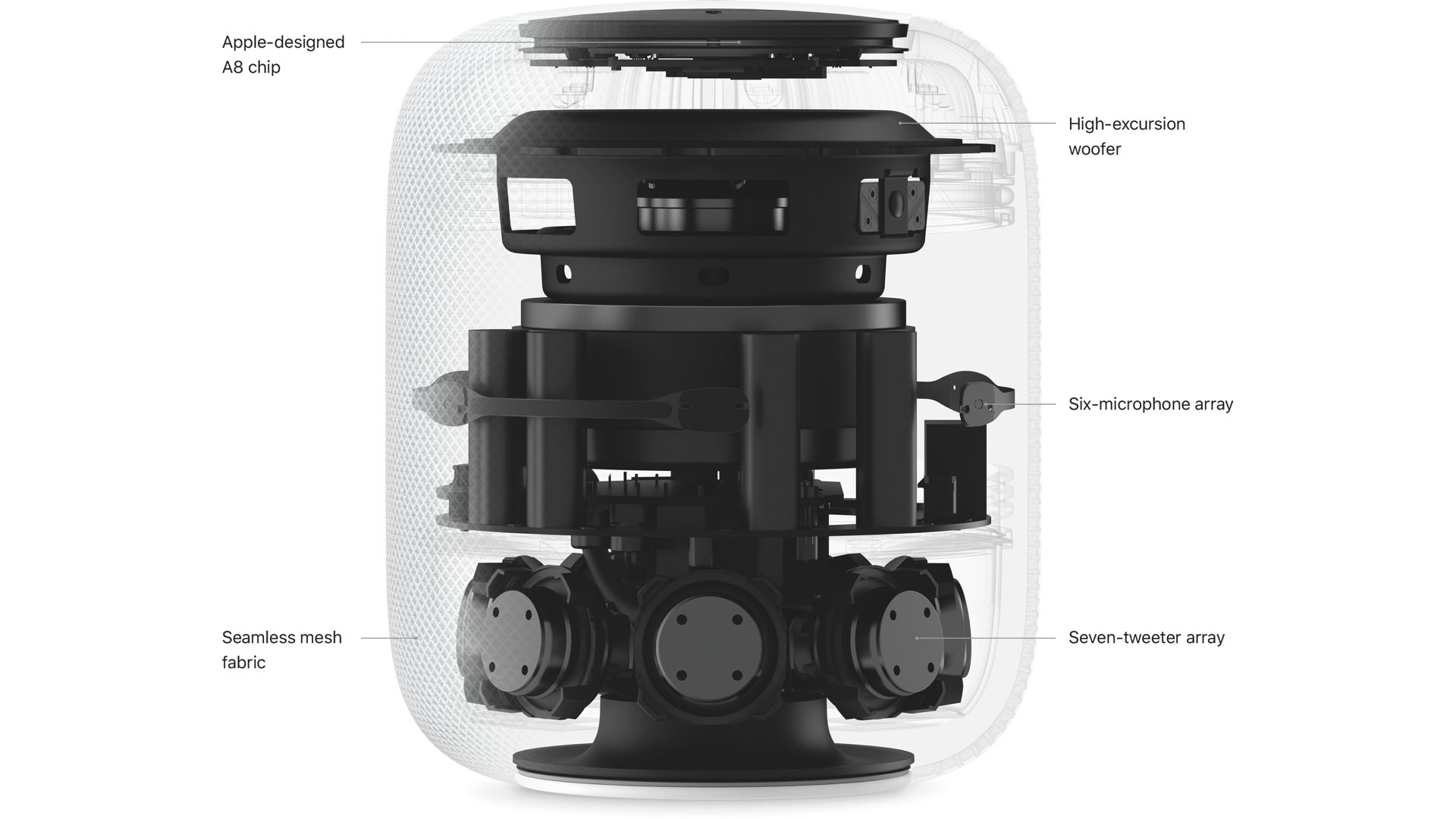
While the HomePod will sound sweet to everyone, only those in Apple’s ecosystem can easily play music to it. With no Bluetooth or line in, there are two ways to get your musical choices on it: ask Siri, or stream music to it over AirPlay.
Siri will pull music from your Apple Music subscription (if you have one), your iTunes Match account (if you have one), and also anything you've ever bought from the iTunes Store (if you ever have).
AirPlay is Apple’s proprietary local streaming tech and is available on iOS mobile devices. You can use AirPlay from iTunes on a Mac or Windows PC, but that's not exactly the primary way of listening to things these days.
There are certain unofficial ways to get AirPlay on other devices, such as DoubleTwist on Android, but Apple's tendency to constantly tweak its systems will break this support every so often, so can't recommend it whole-heartedly.
With an iPhone or iPad, you can play absolutely anything to the HomePod via AirPlay, making it more flexible than a lot of other Wi-Fi speakers. So if your family is all Apple, great. If you have an iPhone, but your other half doesn’t, that’s a bit more awkward.
Of course, Apple's preferred solution is that you subscribe to Apple Music, and then control it via Siri. Users of Spotify, Amazon Music et al cannot do the same.
Still, if you are all Appled up, the HomePod is as slick to use as you’d hope. AirPlay is quick to respond and more reliable than in a lot of third-party speakers, and even if you’ve used Siri to play music, its playback can then be remote controlled from an iPhone from the ‘Now Playing’ Control Centre widget, letting you adjust the volume, pause and skip tracks.
That volume control is handy because while you can tweak the volume on the unit, asking Siri remotely to set the volume to a certain percentage is a bit of a crapshoot if you don’t know what percentage it’s already at. The volume slider offers context.
You can also ask Siri to just turn it up or down (and you can say "a bit" for less of a change), which is what we settled into using mostly.
Apple HomePod review: Siri is… a mixed bag
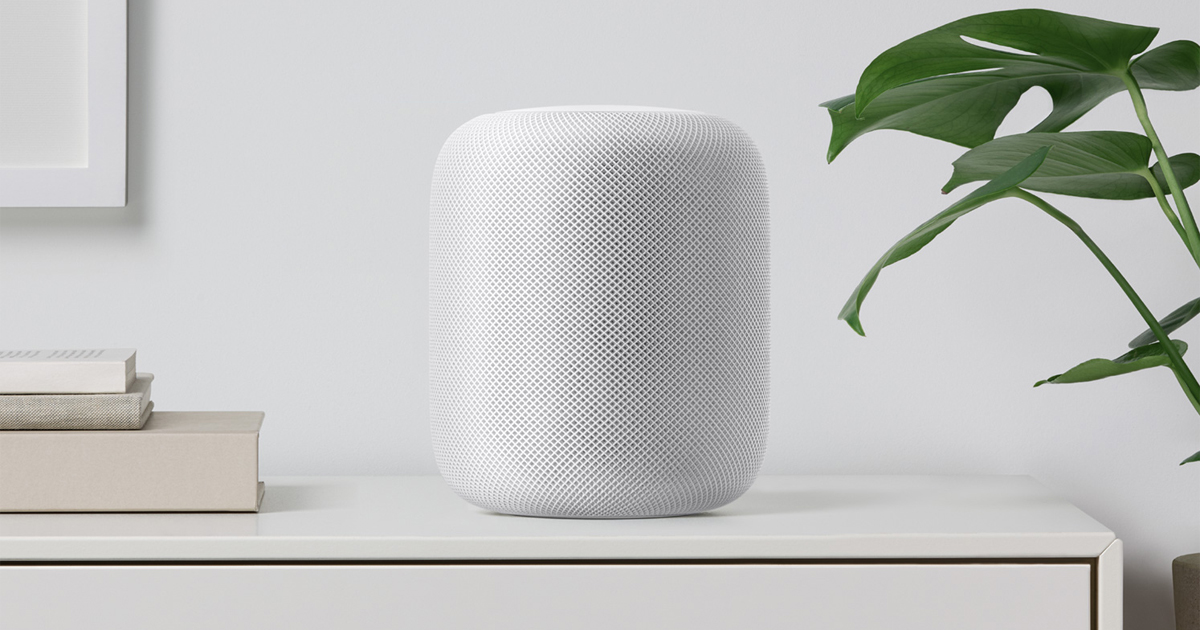
The technical portion of Siri is really solid – its ability to pick up your voice over music or other noise is top-notch. It’s done a good job of understanding our commands during our time with it, too – no major idiocy in the requests so far. But then, that might be because it’s quite limited, and so we’ve only been asking it limited things.
Siri’s main function is as a ‘musicologist’, theoretically able to respond not just to simple requests for an album, but to broader commands like “Play me some ‘90s pop” (it responded with the New Radicals – nice work), and even answer questions such as, “Who played the bass in this track?”
In practice, you may find some of these abilities a bit hit and miss. When I asked it for a station tuned to my tastes, it gave me New Order and The Cure who I've literally never listened to on Apple Music – nor any of their obvious contemporaries. So where that was coming from, who knows?
I do listen to ’80s-inspired synth-pop from current artists a lot, but I'd really expect more of that from new bands, rather than leaping back to the actual ’80s.
We tried asking it to play some Nirvana, and it led with School, which is not exactly the instant, recognisable hit one might expect. Asked for “popular Nirvana songs”, Siri played Love Buzz. Truly, the popular Nirvana hit we were all anticipating.
So we just went simple and asked for Nirvana’s MTV Unplugged album, which is on Apple Music. Siri gave us Now That’s What I Call Music 98.
Okay, most other things we asked for, whether individual songs or albums, Siri delivered. Sometimes when you ask for a famous song that's been covered, you get a random cover rather than the original, but maybe that's just us not keeping up with the times.
One handy thing we liked is that you can ask it to play playlists you've created by name – make them on iPhone, play on HomePod. It works great.
Apple Music also has a huge library of podcasts available to it, but if you don’t use Apple’s Podcasts app, its lack of syncing with what you’ve heard before can be a bit of a pain. If you’re up to date, being able to just ask for the latest episode of something is nice, though.
Some of its other areas are oddly flawed, too.
The messages feature is bizarrely privacy-compromised for a company that prides itself on being a leader in this area. If you’re at home with your phone, anyone can ask to hear the messages, or dictate a new one. And remember, Siri is very good at picking up voices, so don’t expect walls to protect you if they’re thin. You can of course just take the nuclear option and turn this feature off, but that also turns off the reminders and lists option.
Maybe that’s not a big loss, though, as these suffer from the fact that HomePod only recognises one iCloud account. It desperately needs multi-user support, or at least voice recognition to limit someone who’s not you messing with your stuff. It won’t let anyone use these features if you’re away from home with your iPhone, but if your iPhone is on the same network, it’s a free for all.
You can ask Siri to call people too, which it does by connecting to your phone and hunting through your contacts for the right person. Great – but with the same problem that someone can just hijack calling your contact this way.
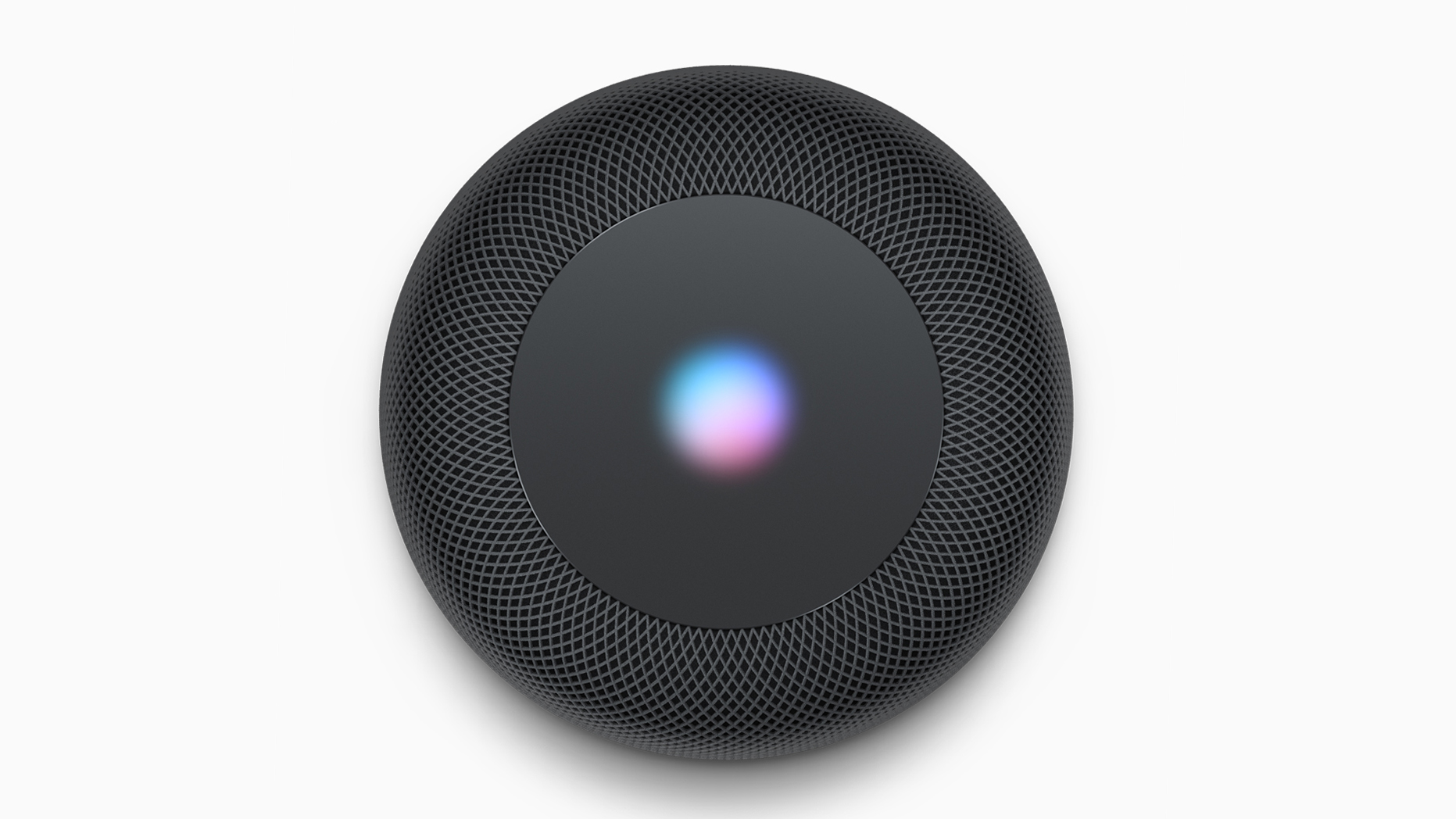
Considering that Apple already has voice security built into the ‘Hey Siri’ feature on iPhones, its omission here is just strange. Apple is adding voice recognition soon, though – see below.
You can set multiple timers, which is handy for kitchen stuff, as is the ability to easily ask for measurement conversions.
You can also ask Siri for weather and sports scores/schedules – standard stuff it can do on the iPhone, and of course, it'll handle smart home control, acting as a HomeKit hub so you can control compatible devices even when away from home – this worked really well, although the choice of HomeKit devices is a bit sparse so far, compared to Amazon Echo.
As good as its voice recognition is, it’s a long way from the flexibility Alexa offers through Skills. Clunky as they can be to trigger, they mean Echos can do almost anything. Siri feels limited by comparison.
Apple HomePod review: verdict
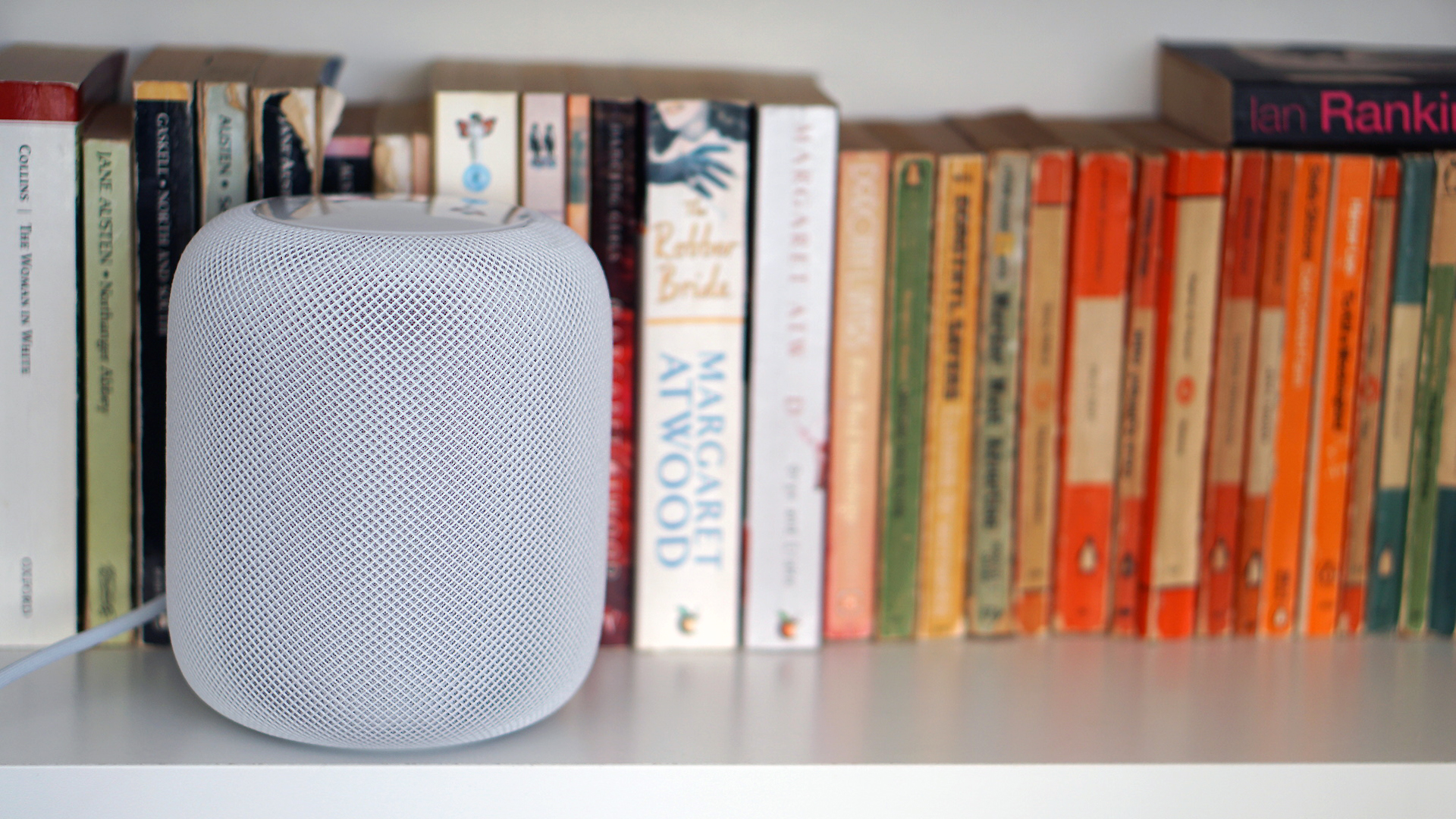
The Apple HomePod is among the best small music speakers you can get, so long as you have an iPhone and, ideally, Apple Music. Seamless streaming over AirPlay, plus multi-room and the option of stereo pairing, round out a solid features.
If you think of it as a music speaker, with a smart assistant who’s handy for certain things chucked in as a bonus, it's actually not a bad price – yes, it's a lot more than an Echo, but you can hear where that cash is going.
Obviously, if you're an Android user, forget it. If you're in the market for a voice-controlled AI assistant and are not overly fussed about music playback and gleaming audio quality, it's also not for you.
All this means that, for a lot of people, the smarter buy would be a Sonos One, since it gives you more flexibility of assistants (and voice control of Apple Music has even come to Alexa now) and operating systems, and is significantly cheaper.
But HomePod is the better speaker, and integrates with HomeKit smart home setups in a way that the Sonos doesn't. So for the size-able portion of people out there who are big into Apple and want serious sound, you'll be more than happy with the HomePod.
Apple HomePod review: updates
Since our initial review of the HomePod, some features have been added, including multi-room playback, stereo pairing, and improved Siri options. The review above reflects all of these, as well as a drop in price from £319 to £279.
The HomePod will also get extra new features after the release of iOS 13, expected in September 2019. These include individual voice recognition at last, which will hopefully be good enough to solve our gripes about that.
It also adds the ability to include HomePods in smart home automations through the Apple Home app, so you could tell it to play a certain song to wake you up in the morning while also triggering your smart light to come on, or you can set music playing on your headphones to automatically switch to playing on your HomePod when you enter the house.
There will also be a 'handoff' feature, where you can tap your iPhone to a HomePod to move whatever's playing on your phone over to the speaker.

Matt is T3's former AV and Smart Home Editor (UK), master of all things audiovisual, overseeing our TV, speakers and headphones coverage. He also covered smart home products and large appliances, as well as our toys and games articles. He's can explain both what Dolby Vision IQ is and why the Lego you're building doesn't fit together the way the instructions say, so is truly invaluable. Matt has worked for tech publications for over 10 years, in print and online, including running T3's print magazine and launching its most recent redesign. He's also contributed to a huge number of tech and gaming titles over the years. Say hello if you see him roaming the halls at CES, IFA or Toy Fair. Matt now works for our sister title TechRadar.